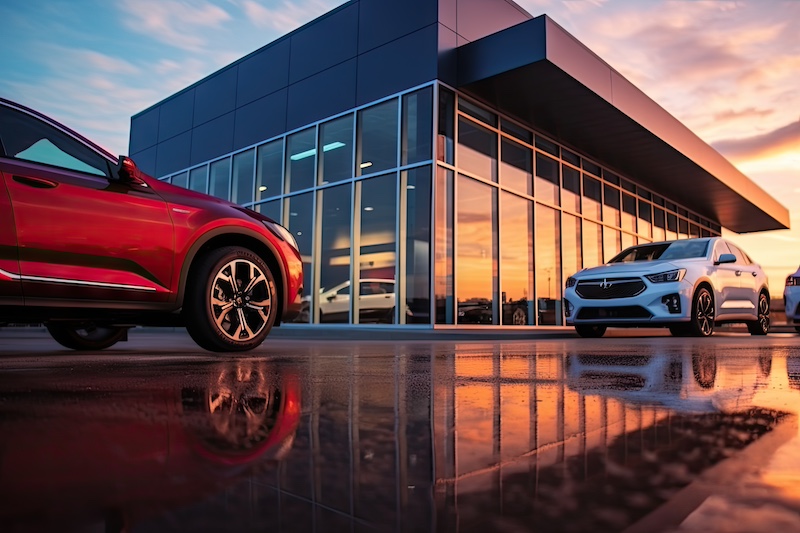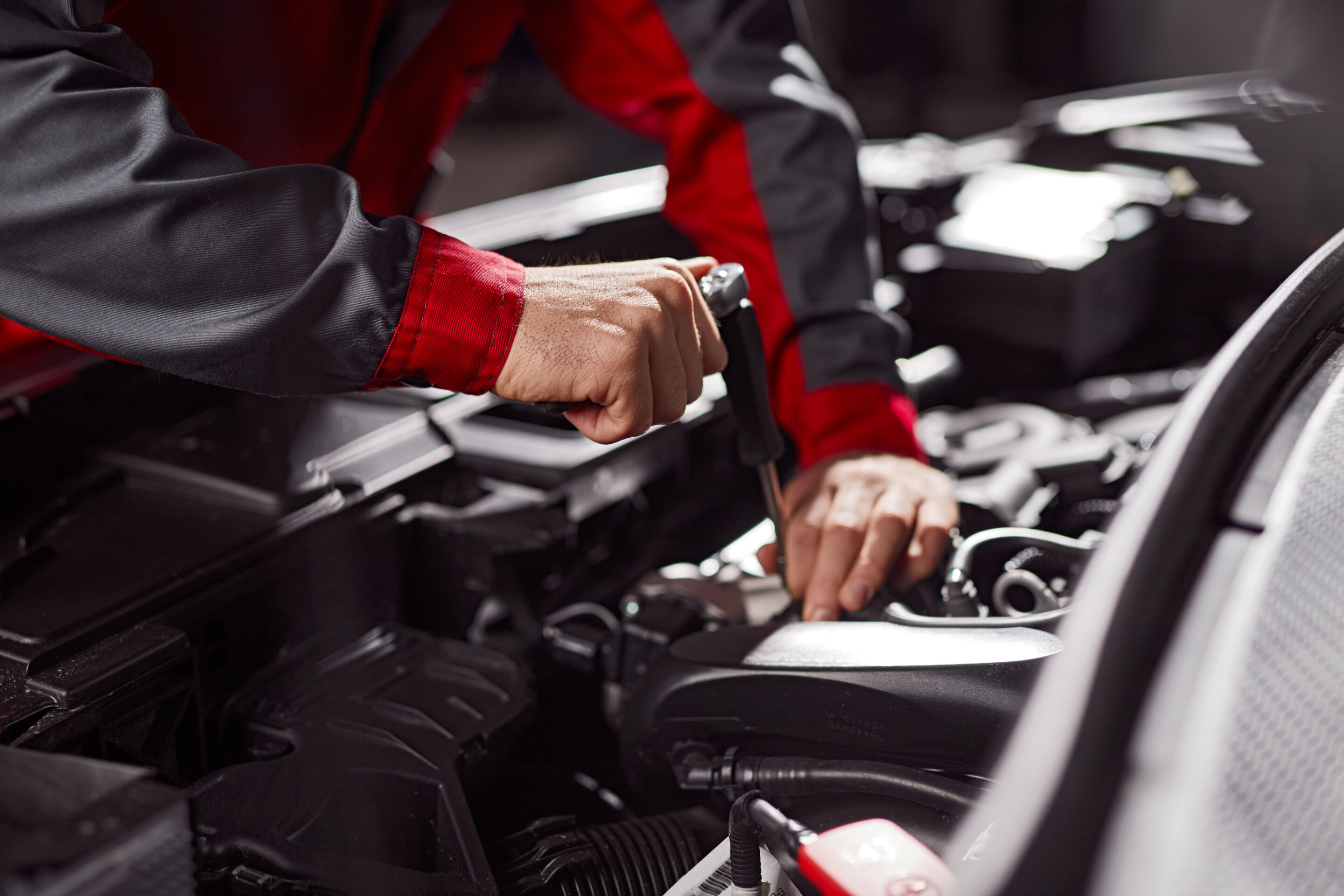 Modern Automotive Group’s story, to be frank, isn’t really all that modern. That’s because the group’s original store dates back before the days of the Great Depression. The Chevrolet store – one of two in Winston-Salem, NC, was going out of business when O.F. Fowler, a horse and mule trader, was talked into buying it in 1933. Now it’s 77 years later and that distressed Chevy store has grown into a nine-dealership group. O.F.’s son, O.T., 102 years old now, retired in 1989, passing the reins to his sons Rob and Fred, who have been running the group ever since. In the not too distant future, their sons, Omnia and David likely will be in charge, becoming fourth generation owners of Modern. So even though it’s not a “modern” tale, Modern’s story is one of successful American entrepreneurship.
Modern Automotive Group’s story, to be frank, isn’t really all that modern. That’s because the group’s original store dates back before the days of the Great Depression. The Chevrolet store – one of two in Winston-Salem, NC, was going out of business when O.F. Fowler, a horse and mule trader, was talked into buying it in 1933. Now it’s 77 years later and that distressed Chevy store has grown into a nine-dealership group. O.F.’s son, O.T., 102 years old now, retired in 1989, passing the reins to his sons Rob and Fred, who have been running the group ever since. In the not too distant future, their sons, Omnia and David likely will be in charge, becoming fourth generation owners of Modern. So even though it’s not a “modern” tale, Modern’s story is one of successful American entrepreneurship.
Your dealership has had a long and fascinating history. Can you give us the condensed version of how it developed into what it is today?
My grandfather was, among other professions, a horse and mule trader in the early 1900s. He had moved to Winston-Salem and in 1933, during the Great Depression, one of the two Chevy dealerships in town was going broke. I guess overdealering was a problem even that long ago.
My grandfather was talked into buying the dealership by his partner. With my dad’s help they sold the entire stale inventory in a couple of weeks and turned the store around. My father soon took over day-to-day operations and Modern Chevrolet remained our only dealership until 1989. My older brother Fred had joined the company in 1963 and I had come on board in 1977. Realizing we needed to diversify, we added a Nissan store in 1989 and a Toyota store in 1990, both in Winston-Salem. We’ve continued to look for the right opportunities to grow since then and now have nine, soon to be ten dealerships. Both Fred and I have sons who are in the business and are at various stages in their careers. We’re proud of the fact that the fourth generation is in the business and we’re still going strong.
There were good times and bad. Would you say you’ve learned any lessons from the past that you apply in today’s tough market?
During WWII there were no new cars to sell, so my father, who turns 102 this month, sold used cars, service, used tires, and gas to keep the dealership open. They fabricated parts so they could make repairs, since no new parts were available. My father even drove the company wrecker home over the weekend in case there was a job he could tow in! He got down to 12 total employees at one time. I think that shows that you can be successful at almost any level of sales volume if you are creative and control expenses. We try not to overact to a bad month or two, but when the fundamentals change we don’t wait too long to respond. I’ve learned that no expense is too small to matter when it’s really tough.
On a personal level Rob, what about the auto business first appealed to you? Did you consider anything else or was it just in the blood?
I stocked parts, wrote service, and sold used cars through high school and college, but I was leaning toward law school or hospital administration during college. I got married and moved to Chicago while my wife completed her master’s degree and I was goofing around taking some classes at the University of Chicago. Pretty soon I wanted to start bringing home a paycheck, so I started applying at Chevy stores. I quickly realized that nobody would hire a dealer’s son, so I told them my dad was a car salesman and got hired. That year of selling Chevy’s in Chicago taught me a lot, and I realized I loved the challenge of meeting customers and earning their trust and ultimately their business. I liked everything about the business, so I guess it was in my blood all along.
As you were developing in your career, did you see things you thought might be done better?
Sure. Starting with that job at Keystone Chevrolet in Chicago, I saw how important a dedicated F&I department was. That was 1976, and at the time the salespeople handled F&I at Modern Chevy. Most changes aren’t that big, however. It’s just a consistent process of reviewing our daily efforts and trying to make them more efficient and productive. I wouldn’t take credit for any great new ideas. Most of the changes I’ve made were borrowed from someone else. We function as a team and most of our innovative ideas have come from another family member or a manager. For example, in the early 90’s we were quick to adopt third party leads as a way to grow our business. That led to a centralized BDC for all our stores. My nephew, Omnia, was the driving force behind that. We got good enough at it early that we ended up training other dealerships. My brother led us into wholesale parts sales in the early 70’s to the point that we were, and still are, one of the top 25 GM parts dealers in the U.S. But you have to adapt to change. In our Internet efforts today, we are much less focused on third party leads than before, and due to increased costs, Fred and our Chevy parts manager helped organize a Parts Co-op. Now we share territories and route salespersons with three other dealerships and that has reduced our costs dramatically. You’ve got to keep moving to stay ahead.
You’re a family run business. Tell me what practical difference that has made?
For me, it has been a big part of why I enjoy my job so much. Starting with my dad and now with my older brother Fred, I’ve always had a family member that I could bounce ideas off of and get help with major decisions. Fred and I have completely different areas of responsibility. But when I’m unsure about something or when it’s a major decision or investment, I turn to Fred for advice, and vice versa. We have total confidence in each other. Now we have five sons who have joined us. Fred’s oldest, Omnia, has been with Modern for 20 years. My youngest, David, just started a few months ago. Our company is larger, and there are seven of us, not two, so we’ve got to make sure we take advantage of everyone’s best talents. We each have different strengths. My goal is for the 4th generation to have the same degree of trust and confidence in each other as Fred and I have had. That makes working with family easier, rather than harder.
What is the management structure? (For example, how do you make decisions to expand or contract?)
Fred and I work closely with Joe Fulk, our CFO, on major decisions. Something as important as adding a new dealership would involve our sons input as well. It hasn’t happened, but if one of them really opposed a major investment, we probably would not move forward.
Let’s talk about the business today. How are sales tracking now? (How are your numbers this year vs. last – unit and dollar sales or percentages)?
2009 has been disappointing from a volume standpoint. We sold about 8,000 retail units last year compared to more than 10,000 in 2008. We are down as a group 24% in new and 19% in used. Service and parts only declined 6%; however, our body shop was down just 7%. I’m proud of how we’ve managed expenses in 2009 and as a result we ended up with a strong year profit-wise.
What do you do to keep improving on CSI?
Now that measuring CSI is so much more specific, we tie pay plans in service, sales and most of our managers to our CSI numbers. Sometimes though, it seems like the manufacturers think CSI is a new concept. My family built our business for 76 years based on treating customers right and getting referrals and repeat customers.
Now that we have more stores and can compare numbers, we focus on our best performers and benchmark our top departments. When we have our monthly General Managers Meeting, we try to identify why one manager or one department is out-performing the others in CSI. We’ve found that the answer is usually attitude.
What do you do as president to ensure all your employees reflect this customer focus?
My father built a great business by treating his employees and customers with respect and trying to do what’s right each and every day for 50 years. It’s not any more complicated than that today. Fred and I try to set that same example for our sons and the general managers, who are expected to also be good role models. The result is that we have a loyal dedicated group of employees that do a great job representing us and taking care of our customers.
How are goals communicated to all the stores? (This may have been answered in the question about management structure)
I don’t believe in setting goals for others. Without the person’s input and commitment, a goal is of little value. At the start of each year our general managers do a self-performance assessment and set their goals for the upcoming year. I review those and often we don’t even need to make any adjustments.
Does formal training play a role?
Depending on their level of financial knowledge, we encourage our GM’s to attend financial training when offered by NADA or the manufacturers. Fred’s sons, Omnia, West, and Brad, all attended the NADA Dealer Academy and we are preparing my sons for that program as well. Brad is arranging for NADA to help us with the comparison numbers from each store for our monthly meetings. He’s bringing in a NADA facilitator on a trial basis to see how that goes. To succeed, this 4th generation will need to be smarter businessmen and better dealers than Fred and I have been, as the competition always gets stronger.
On the used car side, what is the new to used ratio for the group?
For all of 2009 we sold 1.5 new to 1 used retail unit. I’m happy with that ratio – we’ve been as high as 2 to 1.
How important is fixed operations to the group’s bottom line?
We’ve always relied on fixed operations to make a major contribution to our overall profit. We have one of the largest body shops in the southeast and our parts wholesale operation runs 36 trucks every day delivering to customers all over North Carolina. That is in addition to our normal parts and service departments. Still, we felt that we could do better and a couple of years ago, we intensified our efforts to make those departments more profitable. My nephew, West, brought in some fresh eyes with a consultant group and had group meetings to compare numbers and share best practices. Obviously, since sales have slowed down, profits from our fixed departments have been even more important. Those departments played a big part in our ability to produce a good profit in 2009.
Let’s talk a bit about the big challenges ahead for your business.
This business is all about people and that includes family members. Fred turns 70 this month, and as he plays a less active roll in day-to-day operations, we’ve got to assess strengths and weaknesses and re-allocate responsibilities accordingly. If we do a good job with that and continue to have talented, loyal people in our key management positions, we should be successful in the future.
What factors led you to the decision to open a Mahindra store?
I’m convinced we will continue to see upward price pressure on fuel costs and the high tech diesel technology that Mahindra owns could make their product very attractive in the future. We think that affordable trucks and SUV’s with great gas mileage and a strong engine with plenty of torque can earn a slice of the market. Mahindra is a major company with huge resources that should allow them to come to the U.S. and have staying power. We also know that, like any start-up, there are risks involved and we are keeping our initial investment in facilities low for now.
Downturns often lead some dealer groups to expand. Is anything else in the works now?
There are lots of good opportunities out there but we are being cautious with our cash. We acquired a Toyota dealership at the end of 2008, so we used some of our reserves on that purchase, and we have a couple of facility projects on hold that we plan to complete in the next few years. With that in mind, we’re pretty comfortable where we are today.
What about the flip side? Has the economy caused you to contract at all?
Not in terms of the number of stores we have, but we cut back our staff from 650 to around 500. For example, we felt that our centralized BDC was generating too much expense after our sales volume dropped off in 2008. Each store now operates its own BDC and the existing management and sales teams have become more directly involved.
What is your marketing mix? Are you making any big changes in how you allocate your ad dollars?
We still use network TV and cable as our primary media, with some radio, print and direct mail added depending on the market and budget. Last year we spent about 27% on TV, 15% on radio, 10% in print, and 13% for grass roots and owner database marketing. Compared to a couple of years ago, print has taken the biggest hit with Internet growing significantly. Each year we seem to cut back more on traditional media and allocate more dollars and effort to Internet marketing. It accounted for 35% of our budget last year. We try not to get complacent with our web marketing because you can get behind in a hurry. We need to get our sales managers to understand how much effort is required to keep the information on our website current and to take more responsibility for that task. We want to be up-to-date and consistent with our web marketing, since it’s the primary way that we communicate with our current owners and new prospects. One of my sons, Lewis, who is just 26, has really taken on this project and is helping us stay on top of it.
Looking ahead, what do you see as your major business challenge (or opportunity)?
We are fortunate that we didn’t lose a franchise during the recent shakeout; however, these events remind us that which brands we sell plays a huge role in how successful we are as dealers, and that nothing in this business lasts forever. In the ‘60s, Modern Chevrolet sold more than 25% of the total new vehicles sold in our market. Today that number is around 5% and we’re still trying just as hard! In the next five to 10 years, I think technology has the potential to really shake up how the manufacturers rank in terms of opportunity. We can’t control which brand or brands are on top in the future, but how we adapt and respond to those changes in the marketplace will be a real challenge for us.
How do you relax outside the business?
My main hobby is golf which I’ve played since I was five or six years old. I also really enjoy listening to music and watching college sports. My wife of 34 years, Bonnie, trains and shows our three Keeshond dogs and I have fun helping her when she goes to a major show. Our first grandchild is 1 ½ and we love spending time with her.








